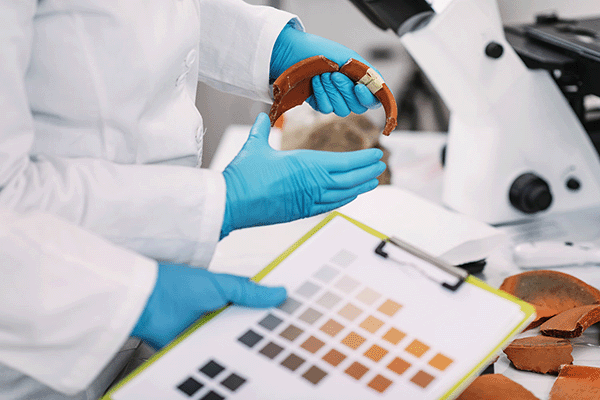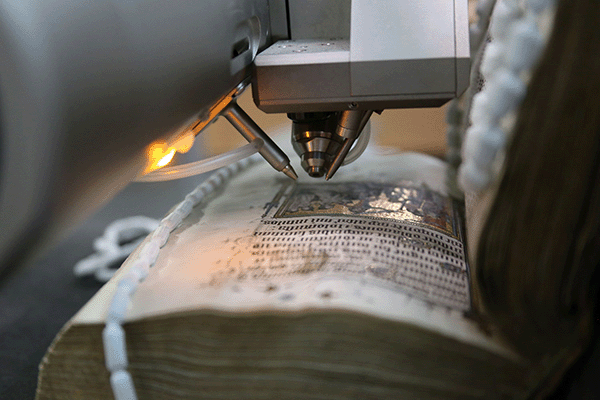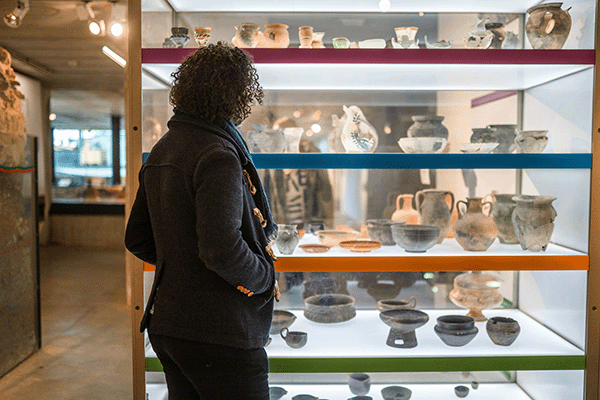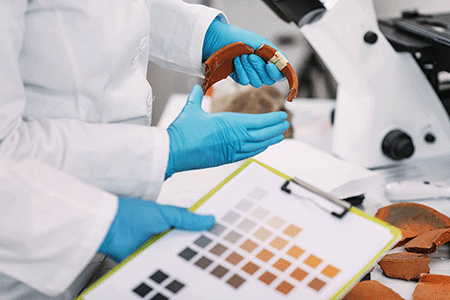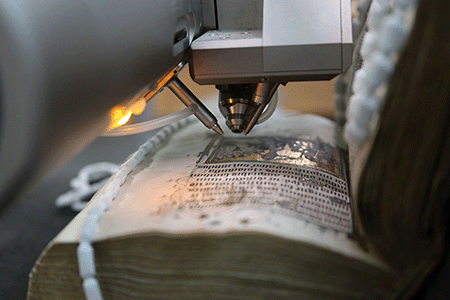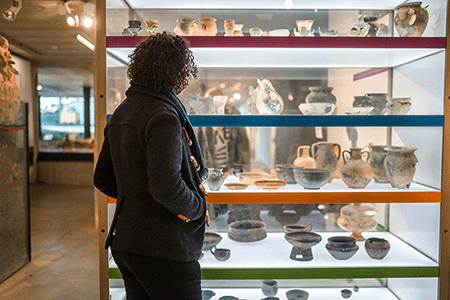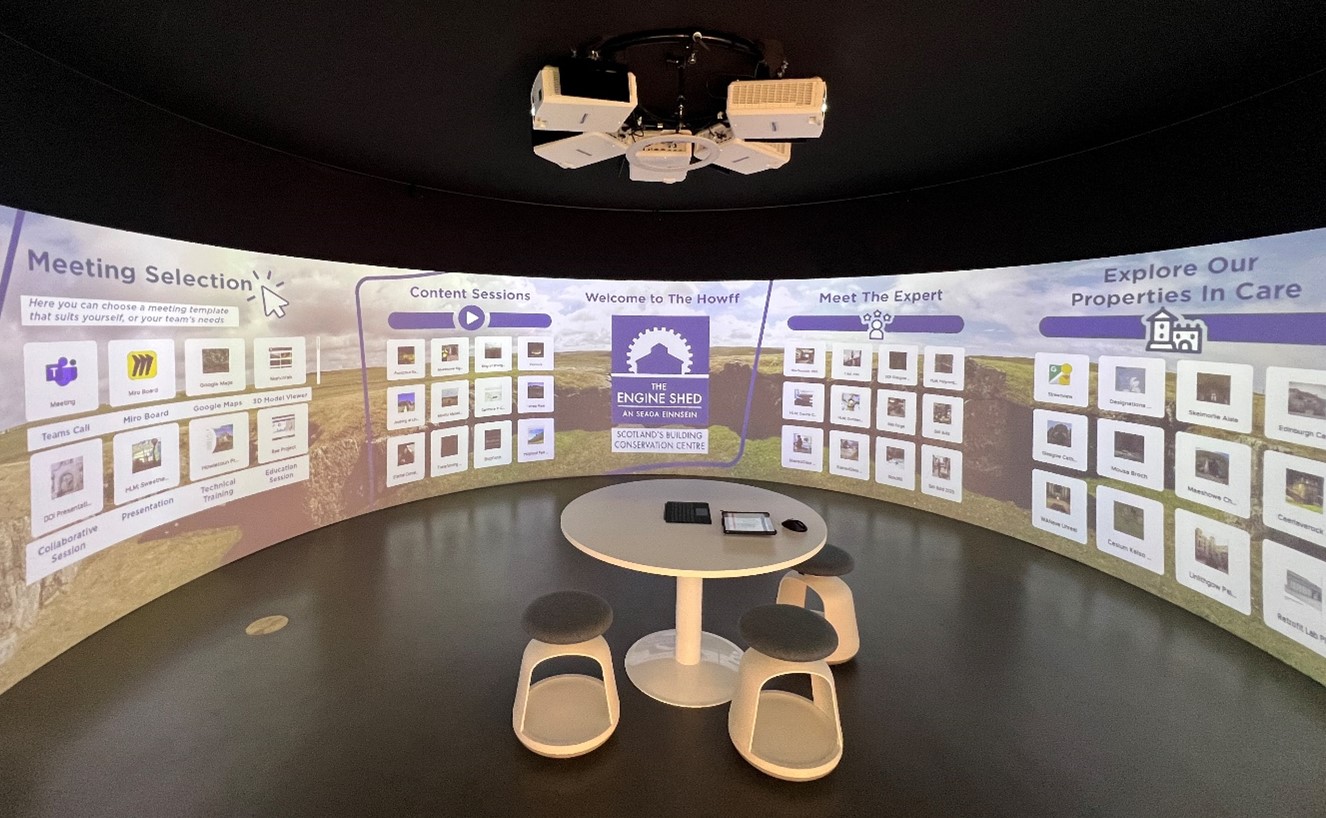The RICHeS team recently travelled to Stirling to visit Historic Environment Scotland’s Engine Shed and met the project team delivering the RICHeS-funded Retrofit Centre for Traditional Buildings, led by Dr Lyn Wilson and Yasser Battikha. This innovative investment is set to expand research capacity and facilitate vital knowledge exchange in the retrofit of traditional buildings, supporting the creation of more sustainable living environments across the UK.
A Centre for Innovative Building Conservation
The Engine Shed is Historic Environment Scotland’s dedicated building conservation centre, serving as a key hub for heritage science research and digital innovation. Its specialist laboratories provide access to cutting-edge techniques and equipment, such as the PANalytical Aeris machine which uses X-ray diffraction (XRD) to determine the mineralogical structure of materials.
The RICHeS team were delighted to witness the impact of previous Arts and Humanities Research Council (AHRC) investments. Highlights included:
- The digital imaging lab, that is capturing 50,000 Collections objects in 3D. This was enabled through the Capability for Collections (CapCo) fund
- ‘The Howff’ A 270 degree, 6m wide digital immersive experience supported through the Creative Research Capability (CResCa) fund.
RICHeS is building on this foundation to enhance access to these innovative facilities and expertise within the team, supporting research and practical work on the retrofit of traditional buildings nationwide.
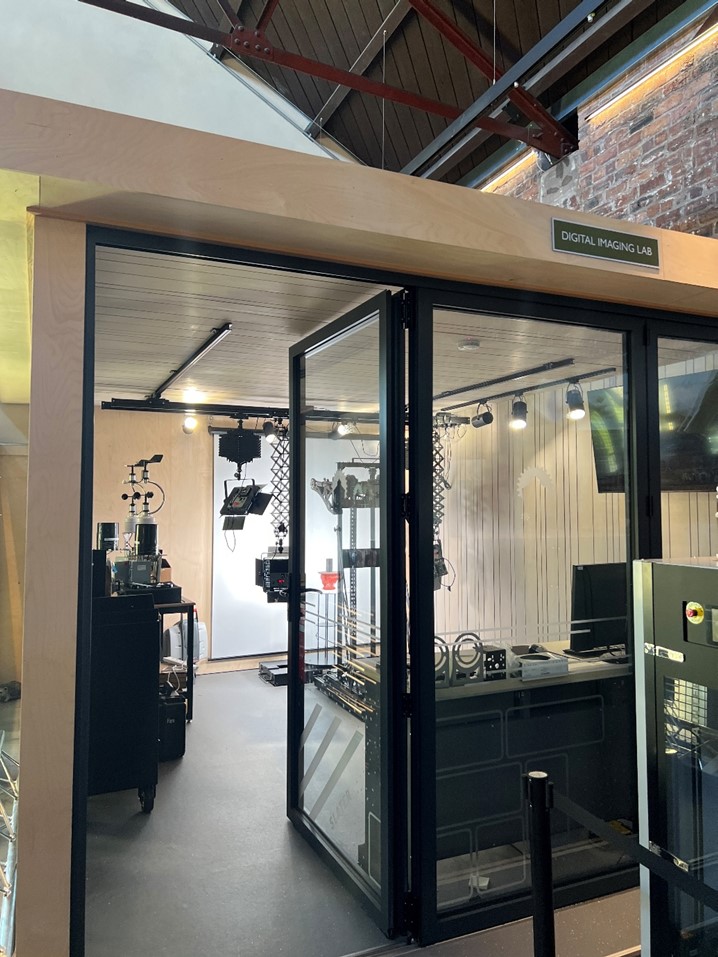
A new Retrofit Centre
Scheduled for completion in late 2026, the new RICHeS-funded Retrofit Centre for Traditional Buildings will be located adjacent to the Engine Shed near the Forthside Footbridge, offering full level access from Stirling City Centre, train and bus stations.
Retrofit, the process of integrating new materials, technology, or features into an existing historic building to improve its performance while conserving its character and cultural significance, is crucial in making the traditional buildings more energy efficient and sustainable. The new Retrofit Centre will primarily focus on knowledge transfer, providing a learning space for education, training and promoting best practices in improving the energy efficiency of traditional buildings. It will also provide access to science equipment to measure and monitor buildings performance.
Given the prevalence of traditionally constructed buildings across the UK, improving their energy performance is essential for achieving net zero targets. The Retrofit Centre will be a hub for innovative retrofit solutions grounded in research and scientific practice.
It was great to see this investment highlighted at the National Heritage Science Forum Conference in July, and RICHeS look forward to watching this develop, creating opportunities for collaboration, innovation and sustainable building practices.
Lyn Wilson shares:
“We were very happy to welcome the RICHeS team to the Engine Shed and explain our vision and progress on the Retrofit Centre project to date. At Historic Environment Scotland, we have been fortunate to receive AHRC CapCo and CResCa funding previously. We are now seeing the benefit and impact of these investments, in how we translate heritage science and digital innovation research into practical solutions for the historic environment. With the RICHeS grant, we now have the opportunity to make really meaningful impact for traditional buildings and their occupants, and we are excited to be moving forward with this project as part of the RICHeS network.”


